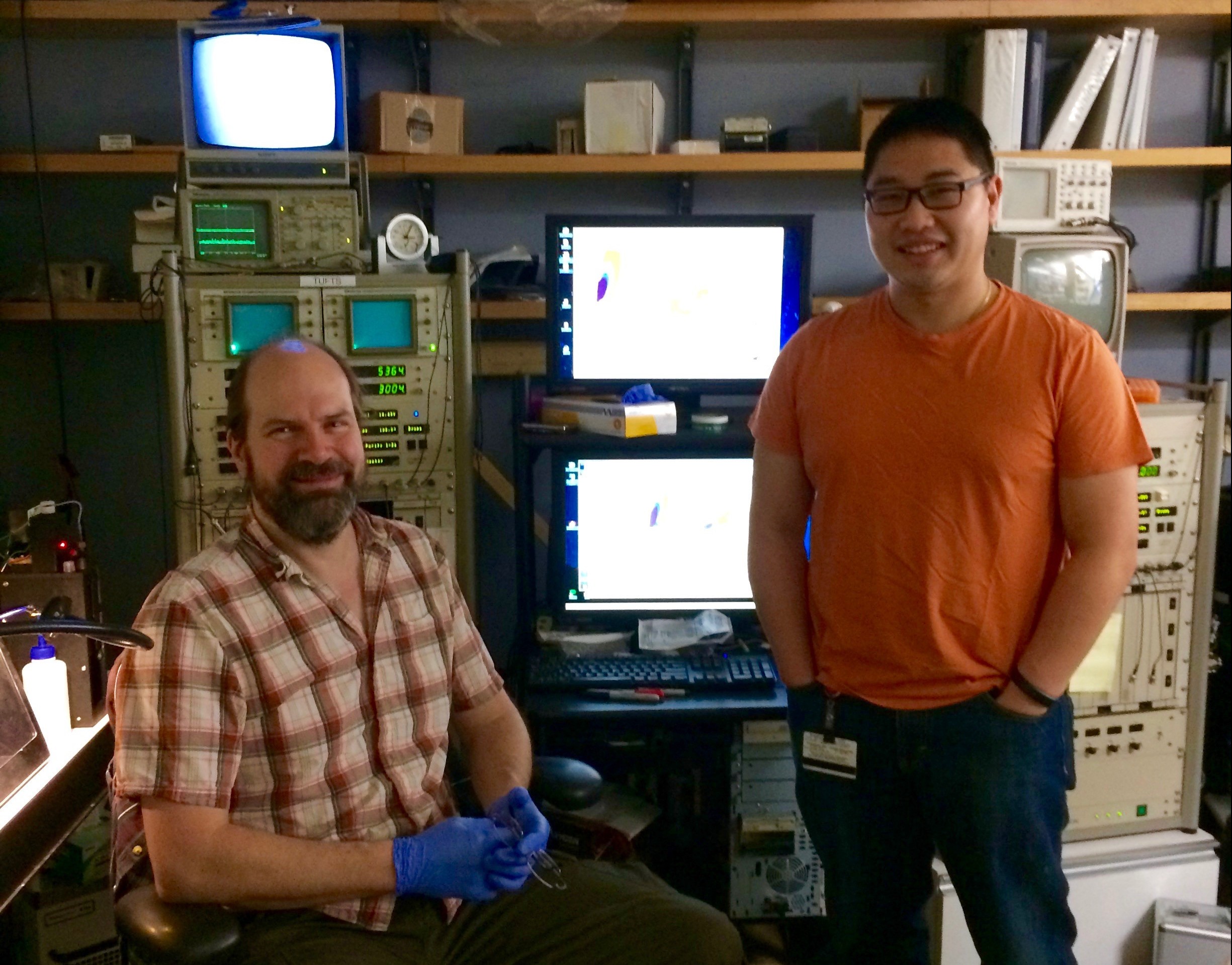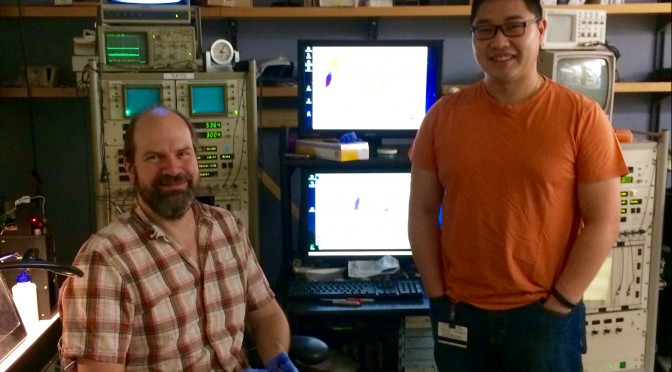
Images
Techniques – Go with the Flow
What is Flow Cytometry and what can it do for you?
by Stephen Kwok & Allen Parmelee
Flow Cytometry is something I never heard about in school, but once I learned about it, the possibilities seemed endless as to how I could use it as a tool to make work and research better. FACS (Fluorescence Activated Cell Sorting) Sounds like an office tool, not a state of the art piece of scientific equipment. In reality, it is like a multitude of fluorescent microscopes all working together to gather data at the same time. Wait, it gets better…you can actually physically separate your cells from one single cell per well on a 96 well plate, to millions of cells in a 15ml tube! The human eye has a habit to have bias; these machines convert the analog data into a digital plot or histogram that can’t be argued with! Is it 30% positive or 35% positive? Yes, we can actually tell the difference!
Let’s back up a step here. The technology is best used if you have markers for your cells. You can take fluorescently labeled antiboties to identify cells. Let’s say you are looking for stem cells. Cd34, SCA-1, and c-Kit are common for hematopoietic stem cells. Label these three, throw in a viability marker, and you have successfully identified these cells. You can move forward with your experiment and simply ANALYZE the cells. Or, you can try to isolate these cells by SORTING them. Fluorescent protein transfections with a GFP or RFP marker are common. Why grow cells in harsh selection media when you can simply pluck them out and put them into a plate? I need to do some PCR, but I have to figure out how to get 1 cell, 5 cells, 25 cells, 50 cells. Limited dilution is going to take me forever! In as fast as 30 seconds you can have those exact numbers of cells lined up into your pcr tubes or a 96 well plate.
At our facility we have cell analyzers available for use 24/7. We train people in basic theory, and then help them get started on how to run the instruments. Sorting, however, is a little more complicated and is done by the two intimidating guys running the facility: Allen and Steve.

There are always plenty of questions to answer about FLOW. How fast is fast? Well the Analyzers can run approximately 3,000 cells per second. The high speed cell sorters. 30,000 cells per second! This can translate to over 100e6 per hour. How sensitive are the machines? We can detect one cell in 10e6 cells! How many markers can I use? The most common is 4 different colors at a time, but we could do up to 17. Be wary, however, just because we said you can. Doesn’t mean you should. Work smarter, not harder! I have 4 different populations: can I sort them all at once? Yes! In fact, we can do up to 6 simultaneous separate populations at once.
How can I do good flow cytometry? The key is sample prep! Yes, they seem like magical boxes, but the experiment is only as good as the components. Titer your antibodies. TEST them with a positive control. Bring a negative or untreated control as a baseline. Would you run a gel without the markers? Find the correct markers, and look for the greatest separation. Cells need to be in Single Cell format. It is highly recommended to filter/strain your samples because the pathway for the cells are 70-150um in size, a clump of cells can clog the machines and render them inoperable.
Come by, check out the machines, ask us questions…we hope you’ll be pleasantly surprised at the possibilities.
Tufts Laser Cytometry, Jaharis 5th floor.
Special points of interest:
- No Color Cloning
- Bulk Sorting
- Fluorescent work
- Cell Cycle
- Apoptosis
- Ca+ Flux
- Single Cell PCR
- Rare Event
- Bacteria
- CRISPR
- Stem Cells
- Neurons
- Transfections
- Infections
- Libraries


